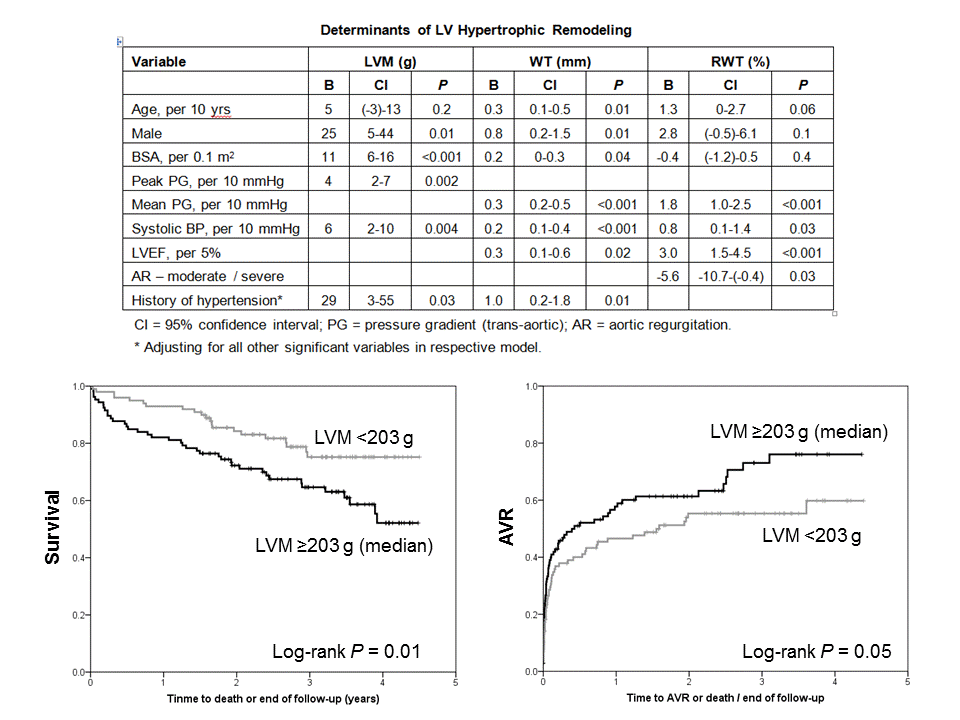Objectives: The extent of eft ventricular hypertrophy (LVH) is highly variable in patients (pts) with aortic stenosis (AS) and LVH may affect prognosis. The objectives of our study were to examine the determinants and prognostic implications of left ventricular (LV) hypertrophic remodeling in pts with severe AS and preserved LV ejection fraction (LVEF).
Methods: The clinical and hemodynamic correlates of LV mass (LVM), LV wall thickness (WT; average of septum and posterior wall), and relative wall thickness (RWT; WT divided by LV end-diastolic diameter) were determined by multivariate linear regression in 205 pts with severe AS [aortic valve area (AVA) 2] and LVEF ≥50% [age: 76±11 yrs, 35% men; aortic valve area (AVA): 0.78±0.15 cm2, mean pressure gradient (PG): 54±18 mmHg; LVEF: 64±5%; LVM: 209±55 g, indexed LVM: 117±28 g/m2]. The relationship between LVH and outcome [mortality and aortic valve replacement (AVR)] was examined using Kaplan-Meier statistics and Cox proportional hazards multivariate models.
Results: The determinants of LVH are displayed in the Table. Trans-aortic PG and systemic blood pressure (BP, measured during echocardiography) were independently associated with hypertrophic remodeling, adjusting for age, sex, and BSA. A history of hypertension was independently associated with elevated LVM and WT, adjusting for other hemodynamic parameters. AS-associated symptoms (dyspnea, angina, syncope; mild or severe) were not associated with LVH. During a median follow-up of 2.7 years (inter-quartile range: 1.6-3.6), 61 pts died (30%) and 121 pts (59%) underwent AVR. By univariate analysis, higher LVM was associated with greater mortality (left figure) and referral to AVR (right figure), but these associations were not significant after adjusting for age, sex, AVA, and mean PG (P=0.68 for mortality and P=0.19 for AVR). Similarly, WT and RWT were not independently associated with outcome.
Conclusions: Elevated LV systolic pressure, due to higher trans-aortic PG and systemic BP, are associated with LV hypertrophic remodeling, but LVH is not associated with clinical outcomes.


